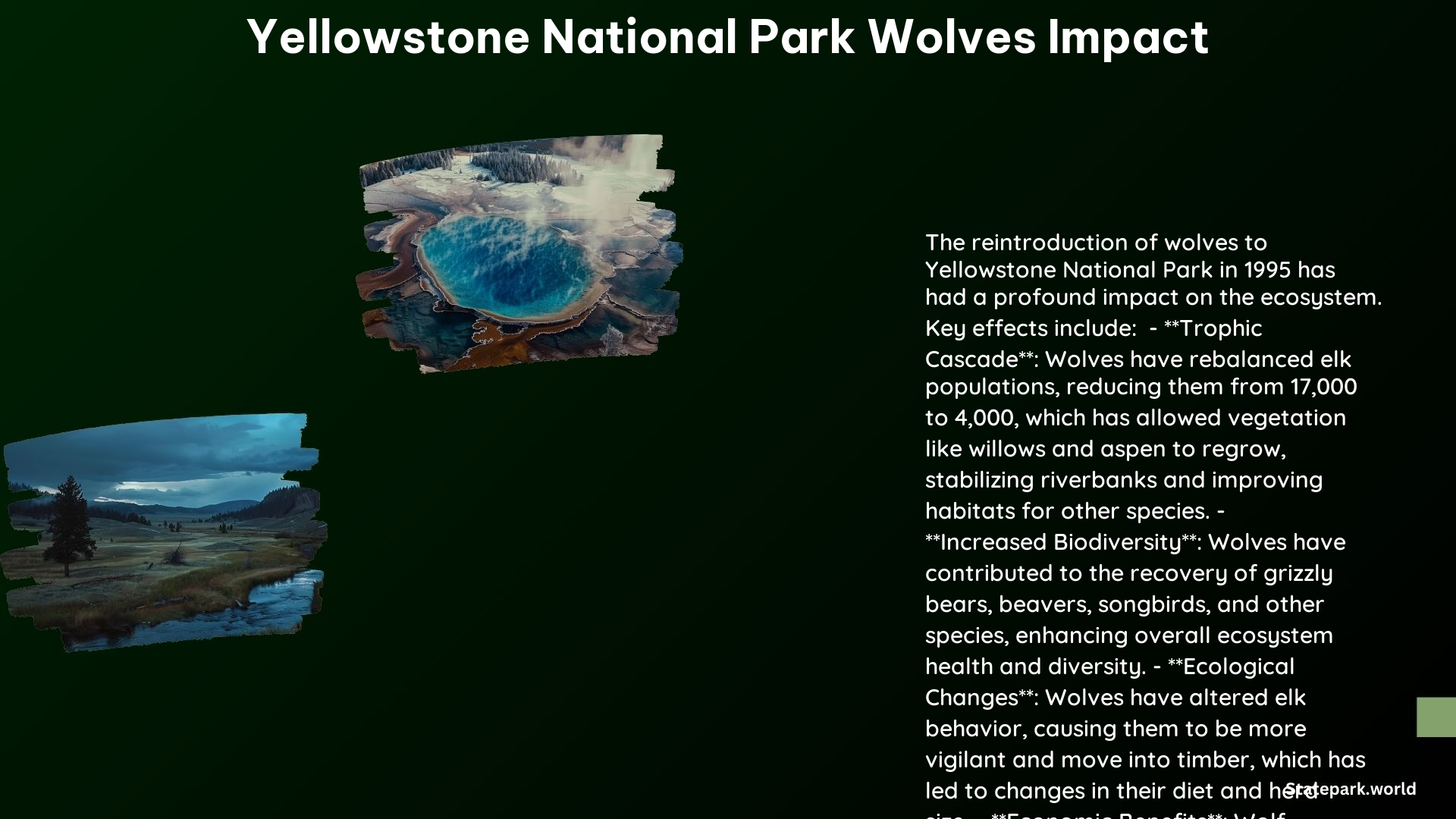The reintroduction of wolves to Yellowstone National Park has had a profound and far-reaching impact on the ecosystem, transforming the landscape and the dynamics of the park’s wildlife. From stabilizing elk populations to reviving the growth of willow and aspen trees, the return of these apex predators has set in motion a remarkable chain of events that has reshaped the very fabric of Yellowstone.
Stabilization of Elk Herds
One of the most significant impacts of the wolf reintroduction has been the stabilization of Yellowstone’s elk herds. Prior to the wolves’ return, the elk population had experienced extreme boom-and-bust cycles, fluctuating wildly in response to climate changes. However, the presence of wolves has helped to maintain a more balanced and resilient elk population.
- Leveling Off of Elk Numbers: The largest elk herd in the park has now stabilized between 6,000 and 8,000 individuals, avoiding the dramatic swings that were once common.
- Targeting of Bulls: During dry years, wolves have been observed targeting bull elk, which are already weakened from the energy expenditure of mating and reduced food intake. This helps to maintain the overall health of the herd.
- Elk Behavior Changes: Elk have become more vigilant and adaptable in the presence of wolves, moving into heavy timber and gathering in smaller herds to avoid encounters with their predators.
Revitalization of Vegetation and Landscapes

The reintroduction of wolves has also had a profound impact on the vegetation and landscapes within Yellowstone National Park. As the elk population has become more balanced, the park has seen a remarkable recovery of willow and aspen trees.
- Willow and Aspen Recovery: The decreased grazing pressure from elk has allowed willow and aspen trees to thrive once again, transforming the landscape.
- Beaver Colonies: The recovery of willow and aspen has, in turn, benefited beaver colonies, as these trees provide an essential food source and building material for the beavers.
- River Dynamics: The end of overgrazing has stabilized riverbanks, allowing rivers to recover and change their flow patterns, further enhancing the park’s natural beauty.
Economic and Ecological Benefits
The reintroduction of wolves to Yellowstone National Park has not only had a profound ecological impact but has also brought significant economic benefits to the region.
- Ecotourism: Wolf ecotourism generates an estimated $35 million annually, making it a significant contributor to the local economy.
- Biodiversity: The return of wolves has contributed to greater biodiversity throughout the Greater Yellowstone Ecosystem (GYE), as the predator-prey dynamics have been restored.
Timeline and Key Events
The story of wolves in Yellowstone National Park is one of both loss and recovery, with a timeline that spans nearly a century.
- Wolf Extinction: The last known Yellowstone wolf pack was killed in 1926, marking the end of the species’ presence in the park.
- Reintroduction: Between 1995 and 1997, 41 wolves were reintroduced to Yellowstone National Park, setting in motion the remarkable changes that have since transformed the ecosystem.
- Legal Status: Wolves were delisted from the endangered species list in 2008, but legal challenges have continued to shape their management and protection.
The reintroduction of wolves to Yellowstone National Park has been a remarkable success story, with far-reaching impacts on the park’s ecosystem and the surrounding region. From stabilizing elk populations to reviving the growth of willow and aspen trees, the return of these apex predators has set in motion a cascade of positive changes that have transformed the very fabric of Yellowstone.
References
-
National Geographic. (2020). 25 years after returning to Yellowstone, wolves have helped stabilize the ecosystem. Retrieved from https://www.nationalgeographic.com/animals/article/yellowstone-wolves-reintroduction-helped-stabilize-ecosystem
-
Conbio.onlinelibrary.wiley.com. (2021). Intended and unintended consequences of wolf restoration to Yellowstone and Grand Teton national parks. Retrieved from https://conbio.onlinelibrary.wiley.com/doi/10.1111/csp2.413
-
Defenders of Wildlife. (2020). We Were Wrong About Wolves, Here’s Why. Retrieved from https://defenders.org/blog/2020/03/we-were-wrong-about-wolves-heres-why
-
National Park Service. (2023). Wolf Restoration. Retrieved from https://www.nps.gov/yell/learn/nature/wolf-restoration.htm
-
Yellowstone Park. (2023). Wolf Reintroduction Changes Ecosystem in Yellowstone. Retrieved from https://www.yellowstonepark.com/things-to-do/wildlife/wolf-reintroduction-changes-ecosystem/.
